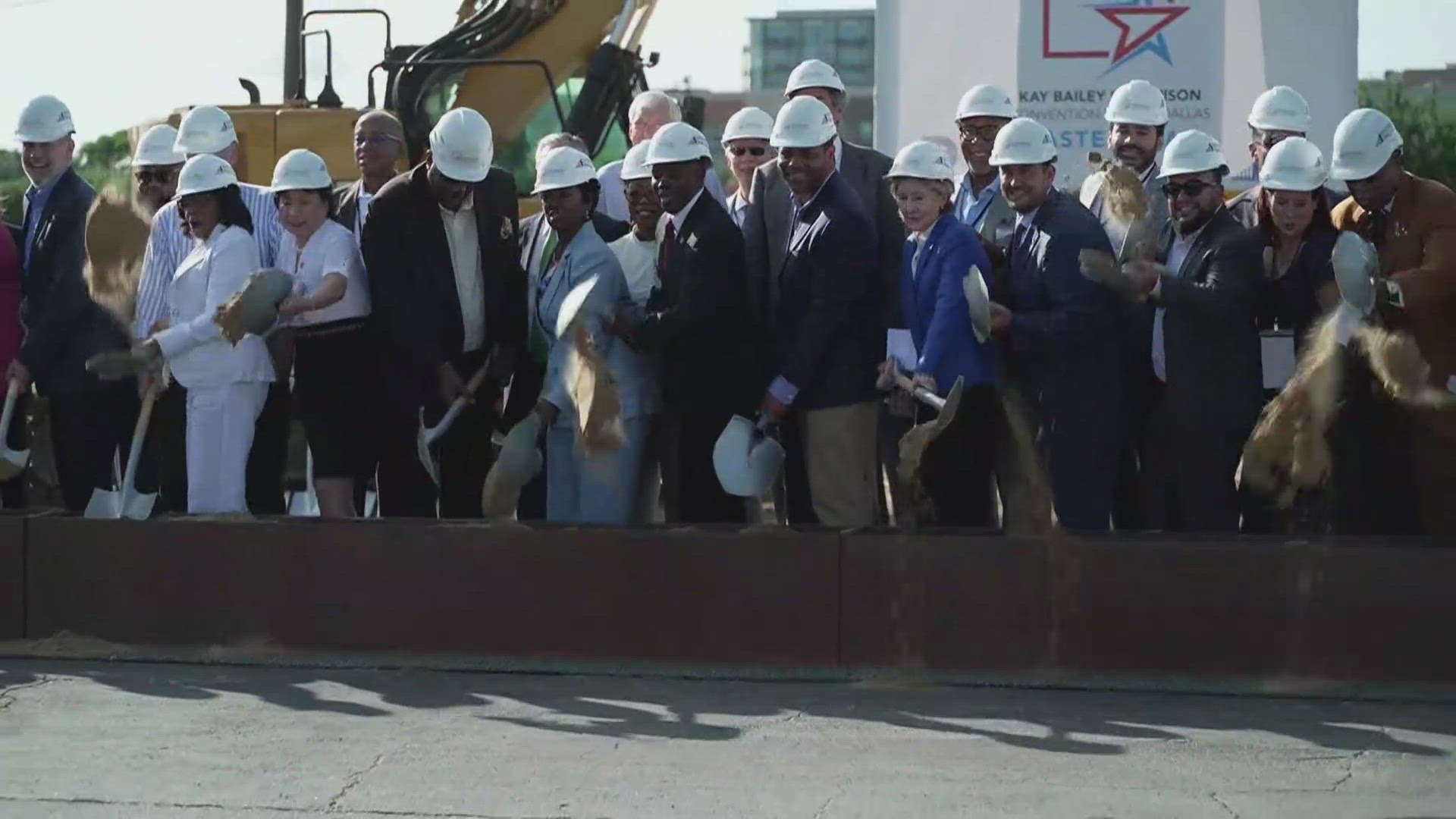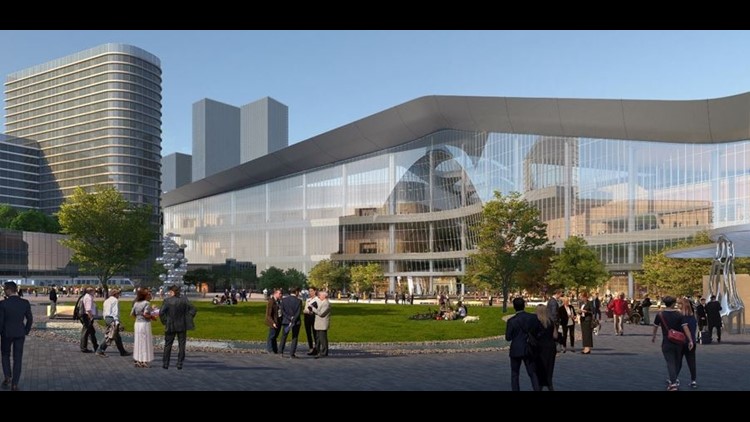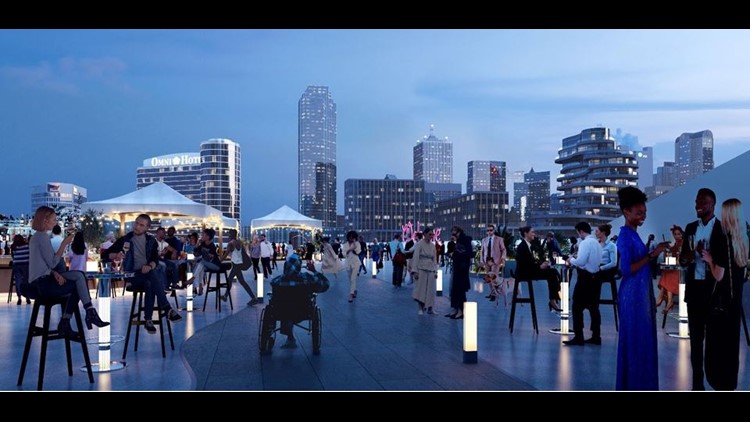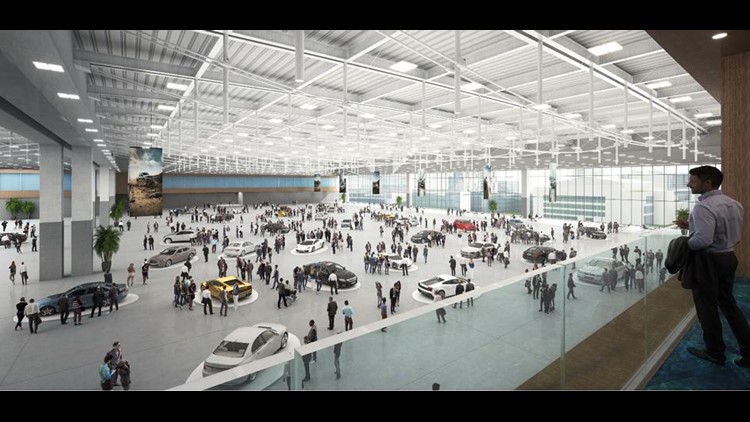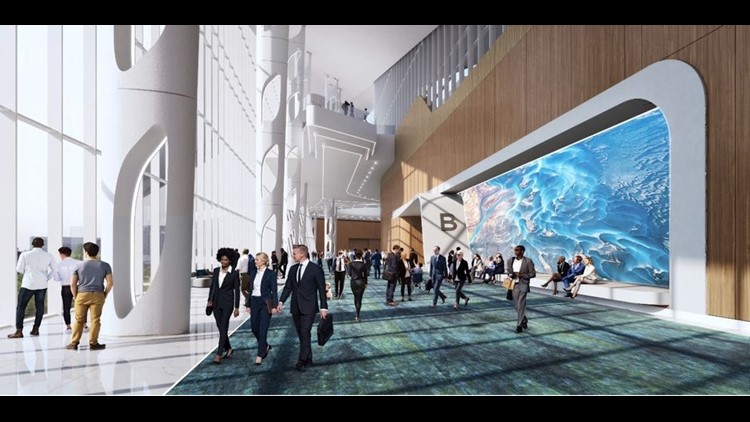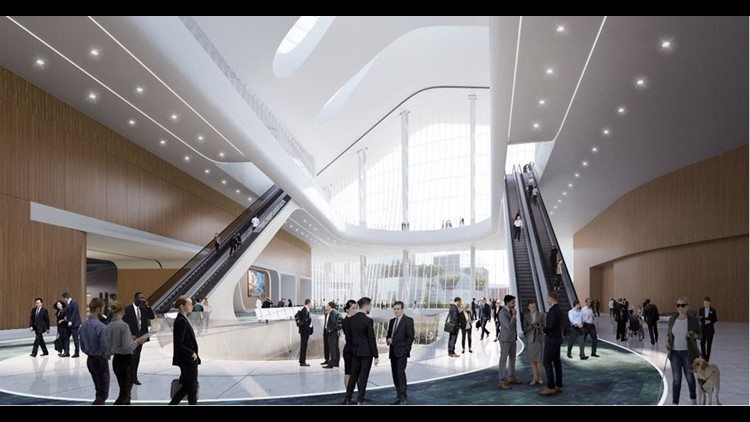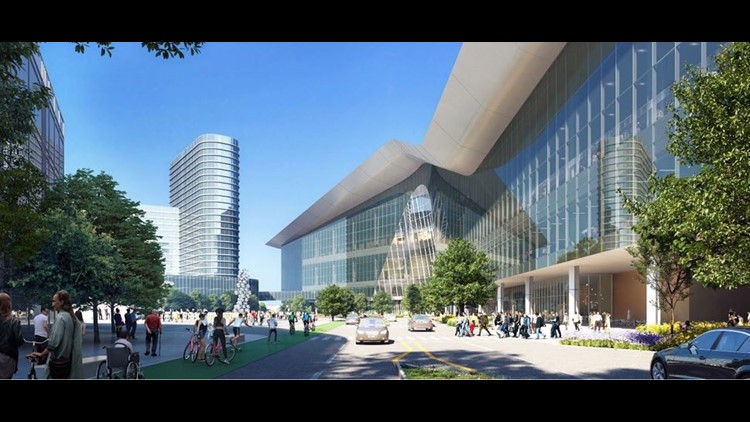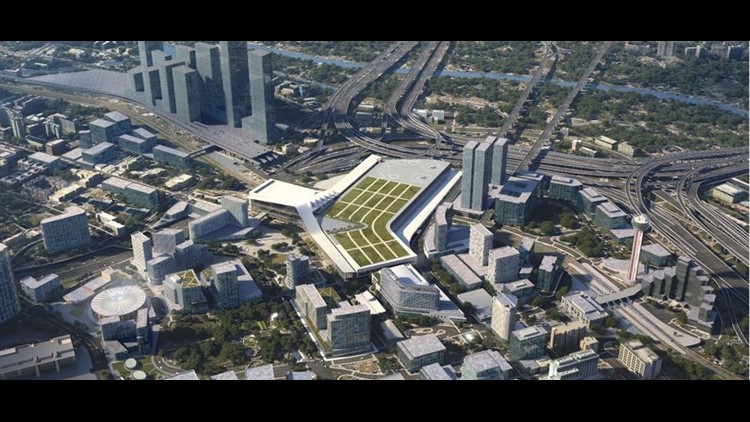DALLAS — Weeks after questions were raised about Visit Dallas and the Convention Center's decision to compensate over $1 million of the National Rifle Association's total costs to bring their annual meeting to Dallas, the city symbolically advanced its plan to bet even bigger on the potential economic impact of conventions and meetings on Dallas’ economy.
Some of the city’s most influential politicians were there Wednesday to participate in the groundbreaking, including the convention center's namesake, former Senator Kay Bailey Hutchison, and Mayor Eric Johnson.
“We are growing as a city and since we are growing, we need to have economic opportunity and economic development,” Tennell Atkins, Mayor Pro Tem of Dallas City Council, said at the groundbreaking. “It’s going to have a big economic impact. That means sales, that means downtown, that means restaurants, hotel stays but it also means jobs for the people."
According to Visit Dallas, a quasi-governmental organization funded through the Dallas Tourism Improvement District, the Dallas tourism economy is a $6 billion industry supporting 60,000 jobs. Tourism brings in $600 million in state and local taxes paid by visitors coming into the city, Craig Davis, president and CEO of Visit Dallas, said.
One of Visit Dallas' roles in the tourism industry is attracting business to the convention center by providing incentives, such as the one provided to the NRA and other conventions.
As the city prepares to start work on the estimated $3 billion project -- which will expand not only the Kay Bailey Hutchinson Convention Center but also Memorial Arena and Black Academy of Arts and Letters -- Inspire Dallas, the organization leading the renovation, said the expansion will prompt $6 billion in economic impact and support more than 88,000 construction and ongoing full-time jobs.
The city expects to complete construction by 2029. The project will be paid for by taking out municipal bonds, or debt. Those bonds will be paid down annually by taxes levied on hotel rooms. The debt likely won’t be completely paid down for decades.
While officials have projected a lucrative economic impact, there is often more to those numbers than initially meets the eye, said John Crompton, a professor in the Texas A&M School of Hospitality, Hotel Management and Tourism.
Crompton, who studies how economic impact is calculated, said the specific data points of an economic impact study must be considered.
“Most economic impact research is commissioned by people who have an axe to grind or want to prove a point,” Crompton said. “There's a golden rule, you know, and that is in all of these studies, you follow the money.”
However, as far as investments in the tourism industry go, conventions and meetings tend to be among the most efficient, Crompton said.
“Convention bureaus, that seems to me about as good as it gets in terms of using these dollars,” Crompton said.
How Dallas calculated the expansion's economic impact
The projected Convention Center’s economic impact numbers were calculated in 2021 by the city of Dallas with the help of consultants including Hunden Strategic Partners. In a 2021 memo, the city explained its process for determining economic impact. The total projected economic impact includes direct spending on construction and labor, plus new spending officials expect to be generated by the increased number of visitors downtown, according to the memo.
The direct spending on construction and labor includes the initial investment to purchase materials and pay wages, plus the downstream effect of workers spending their wages back into the local economy.
The new spending officials anticipate is based on increased economic activity in the mixed-use district after the project is complete. Along with expanding the convention center, the project will free up 29 acres of city-owned land that officials expect will become a destination for restaurants, retail and public space.
Plus, job creation includes 50,000 one-time construction jobs and 38,000 ongoing full-time jobs in the tourism and hospitality industries, the memo states. Expected tax revenue is also included in the total economic impact.
The numbers quoted by officials seeking investments in the convention business should still be viewed with skepticism, Crompton said. For example, despite hotels providing most of the funding used to provide incentives and build the convention center, hotels are also the businesses that stand to profit the most from conventions coming to town.
If those businesses are corporately owned, the profits will leave the community, Crompton said.
There are other reasons tidy economic impact figures should be viewed with skepticism, he added. In a 2006 paper, Crompton laid out the many inputs that can complicate an economic impact estimate including ignoring costs to the local community, counting projected spending multiple times and exaggerating visitation numbers.
While economic impact studies can be extremely reliable, often consultants tailor them to align with their client’s goals, Crompton said. Although without public access to the full economic impact report, it's difficult to tell if any of these misleading practices were used in the case of the convention center, Crompton said.
Convention Center renderings
NRA received over $1 million in total incentives from Visit Dallas
In the case of the National Rifle Association meeting in Dallas, the projected economic impact of bringing the meeting to Dallas, about $10 million, was based on the calculated impact from the same convention coming to the city in 2018 and a formula for calculating economic impact that is considered an industry standard, Davis said.
Crompton is critical of utilizing industry-standard calculations to assess impact.
“The problem with that is that the best practice in the industry is lousy and it's self-serving, and it gets you the ends you want and that's why they've adopted it,” Crompton said.
The deal Visit Dallas gave to the NRA was typical, Davis said. In all, the NRA received about $900,000 from the cost of renting the Kay Bailey Hutchinson Convention Center, a figure KERA originally reported. Another projected $1 million in combined state and local incentives will also be paid to the NRA once final attendance numbers are calculated. About $100,000 of that came from Visit Dallas, while the rest is funded through the state’s Event Trust Funds program.
The state program allows cities in Texas to go beyond the incentives they would typically offer, making it easier to win business, Davis said. The final incentive amount hasn’t been paid out to the NRA yet because the final economic impact has not been calculated.
“The bottom line is that they actually have to perform in order to receive the reimbursement for the funds,” Davis said of the state and local share of the reimbursements.
Visit Dallas provides incentives to meetings and conventions for several reasons, Davis said. The organization expects that it will bring in significant tax revenue from out-of-towners, boosting Dallas’ local economy.
“(Meetings) mean hundreds of millions of dollars, if not billions of dollars every year to the Dallas economy, we take that very seriously,” Davis said.
Incentives are also necessary because competition for convention center business is fierce among major cities, Davis said.
“We compete against Chicago, Atlanta, you name the big city, we compete against it,” Davis said. “If we do not offer incentives, the likelihood of us attracting that conference to us is next to zero. So there's an expectation that there will be incentives.”
The stiff competition is also what makes Visit Dallas slow to disclose information about their process of offering incentives, Davis said.
“When those deals get published in the public realm, that supplies our competitive cities with that competitive advantage over top of us,” Davis said. “The fact that there are such high stakes when bidding out these conventions, they mean hundreds of millions of dollars, if not billions of dollars every year to the Dallas economy. And for us, we take that very seriously.”
Crompton agreed with that process.
“They're right about that,” Crompton said. "If you disclose your financial incentives… then you do give the other teams some feel for what you're doing and that's not to your advantage.”
The alternative, he said, is making the criteria for providing incentives public. For example, if a meeting or convention brings in X amount of tax dollars, they would receive X amount of incentives.
Internal audits are another way to either address problems in the public sector or build trust with taxpayers, Crompton said. In 2019, a “scathing” internal audit led to the resignation of then-Visit Dallas CEO Philip Jones. The audit found that the agency lacked oversight from City Hall.
The audit led to corrective action, including city monitoring of expense, audit, reporting and invoicing data.
Beyond the economic equation, there’s a political calculation when potentially controversial meetings come to town.
When Visit Dallas’ sales team finds opportunities to bring a meeting to Dallas, the organization presents those opportunities to hotel general managers and the convention center, who then decide whether Visit Dallas will make an offer, Davis said.
“Visit Dallas is not in a position to say yes or no to anything,” Davis said.
But the city has objected to conventions in the past, specifically the Exxxotica Expo, a sex-centered event held at the Dallas Convention Center in 2016. The Dallas City Council later voted to bar the expo from returning to Dallas.
The vote led to a lawsuit that the city eventually settled for $650,000.
“The bottom line is that we really do want to position Dallas as being welcoming to all,” Davis said. “I'll give you kind of a fun anecdote: When the NRA was moving out, the gay volleyball association was moving in.”

